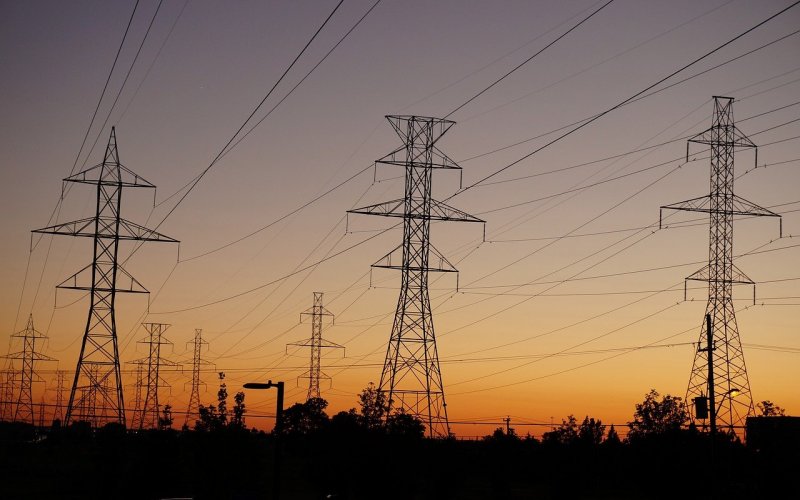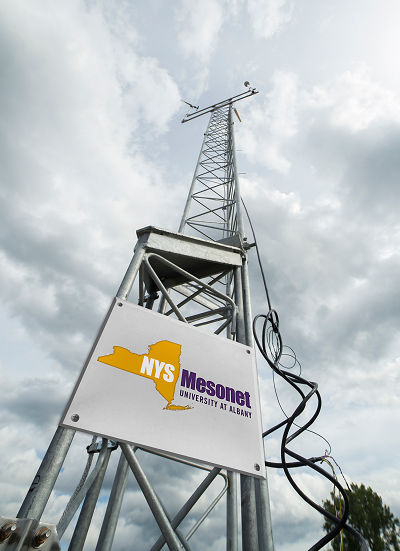UAlbany Partners on New Outage Prediction System To Enhance Storm Preparedness And Response Efforts

ALBANY, N.Y. (Sept. 30, 2021) – Researchers at the University at Albany Atmospheric Sciences Research Center (ASRC) are partnering with New York State Electric & Gas (NYSEG) and Rochester Gas & Electric (RG&E) on a new outage prediction model (OPM) that applies machine learning to available weather data to improve the utilities' ability to predict disruptions in their service.
NYSEG and RG&E, supported by parent company AVANGRID Inc., on Wednesday announced the partnership, which also includes researchers from the University of Connecticut and MESO Inc. The group will analyze an array of weather-related factors that cause service disruptions and build a tool that the utility companies can use to enhance emergency preparedness and response efforts.
The project was awarded more than $600,000 in funding from the New York State Energy Research and Development Authority (NYSERDA) Smart Grid Program, which seeks to fund and support innovative projects to improve the resiliency, reliability, efficiency, quality and overall performance of the electric power delivery system in New York.
NYSEG and RG&E cover more than 40 percent of New York and serve approximately 1.28 million electricity customers.

"We're excited to partner in the creation and piloting of this innovative prediction model that we expect will strengthen our storm response efforts with the potential to shorten durations of outages for the benefit of our customers," said Trish Nilsen, Director of Emergency Preparedness for AVANGRID.
"NYSERDA is pleased to support NYSEG and RG&E's collaboration with university researchers to develop a tool using machine learning techniques that aims to predict disruptions in service caused by weather events with greater accuracy in both location and timing than previous models," said John Lochner, Vice President of Innovation at NYSERDA. "This project supports the state's efforts to ensure a resilient and reliable energy system for all New Yorkers in the face of an increasing number of extreme weather events."
Through this new technology, the utility companies expect to be able to apply artificial intelligence to its analysis of weather forecasts to better predetermine which areas of the electric distribution grid will be most significantly impacted by severe weather, in turn, tailoring their outage prediction and response.
Using meteorological research along with weather observations from the New York State Mesonet network, headquartered at UAlbany, and machine learning-based modeling approaches, this project could potentially provide the basis for a comprehensive framework that the utility companies can use to more reliably allocate crews and resources ahead of a severe weather event.
"Over the last two decades, New York has experienced increasingly extreme weather that poses a risk for extended power outages and significant economic losses," said Chris Thorncroft, director of ASRC, the NYS Mesonet and UAlbany's Center of Excellence in Weather and Climate Analytics. "Our scientists at ASRC are focused on creating smart solutions for weather risk management decisions. We're proud to partner on this new outage prediction model that will enhance utility services for more than a million electricity customers across the state."
“Increases in extreme weather events are leading to a higher frequency of power outages, resulting in economic losses to utilities, businesses and residential customers,” said Jeff Freedman, a research associate at ASRC and OPM project leader. “At present, there is no comprehensive and reliable model forecast system that can dependably predict how hazardous weather events of different types may impact the electrical grid. This partnership will enable utilities and other stakeholders to plan for and deploy necessary resources to minimize power outage impacts, resulting in improvements to reliability and resiliency of the power distribution system.”
This effort will enhance an OPM developed at UConn and AVANGRID, and expand it into the New York service areas of NYSEG and RG&E. It will consider many factors that can impact weather-related damage to the electric distribution system. Each storm-related outage is a complex interaction between atmospheric phenomena, ground cover and management, infrastructure characteristics (such as the strength of the power lines and poles) and soil properties. Understanding how these factors interact with each other in various ways will help predict the impact of storms.
The enhanced OPM pilot will implement a new way to allow the utilities to more accurately stage crews and resources to respond to severe weather events and restore power to customers as safely and quickly as possible.




